Tips for Residents | See Tips for Businesses
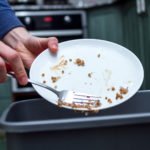
Scrape Dishes Before Washing Them

Rinsing dishes in the sink isn’t necessary and uses six times more water than using the dishwasher alone. Skip the sink and scrape plates, bowls and utensils before placing them in the dishwasher to save water and prevent clogged pipes and sewer backups.
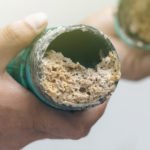
Avoid Putting Fats, Oils and Grease Down the Drain
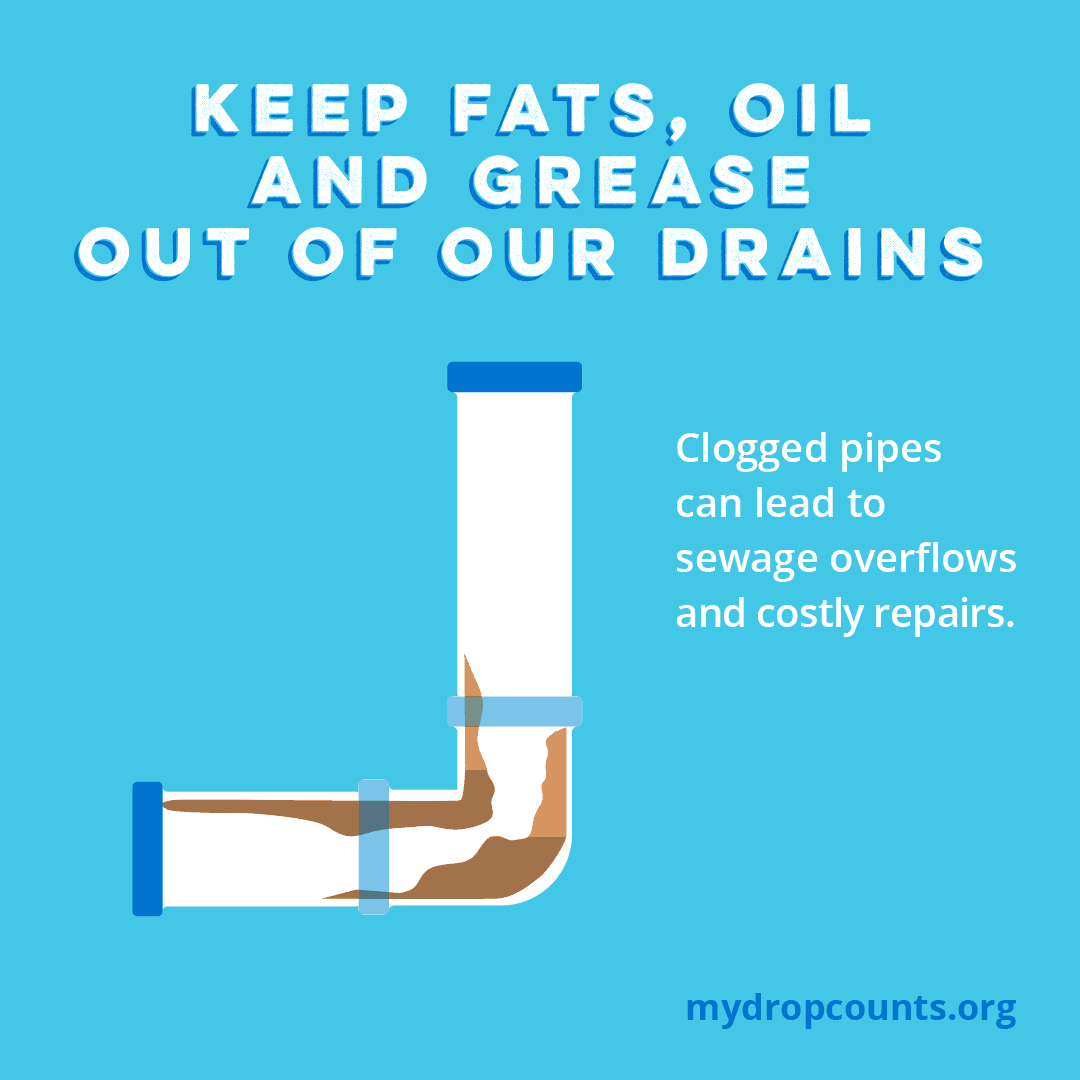
Fats, oil, and grease can accumulate in sewer pipes. As the material builds up, it can cause untreated wastewater to back up into homes and businesses, resulting in costly repairs, messy cleanup, foul smells, and a potential public health threat. Place these items in the trash, not down the drain!
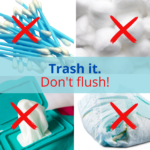
Don’t Use Your Toilet as a Trash Can
Just because you can flush something down the toilet doesn’t mean that you should. Certain types of household waste, such as cleaning and baby wipes and personal hygiene products may go down the toilet, but they don’t break down in the sewer system. Large quantities of these items can clog pipes and cause sewer overflows in your home and the environment. They can also damage sewer system pumps and other equipment resulting in costly repairs or replacement.
Be sure to throw these items in the trash can, NOT the toilet:
- Any paper product that isn’t toilet paper or a paper toilet seat liner
- Wipes that say “Flushable”
- Cleaning wipes
- Personal hygiene and baby wipes
- Menstrual hygiene products
- Cotton swabs, floss, bandages, razor blades, or any other personal hygiene products
- Expired medication (instead take it to a pharmaceutical takeback or mix it with something non-consumable, like cat litter or bacon grease, before throwing it in the trash)
- Anything made of plastic, including bags
- Prophylactics
- Diapers
- Hair
- Cat litter or bagged animal waste
- Fats, oils, and grease (FOG)
- Paints and concentrated household cleaning chemicals (instead, take them to CHaRM or another facility that disposes of household chemicals)
- Cigarette butts
- Toys (be sure to educate the children in your home about not flushing their toys)

Scoop Your Poop
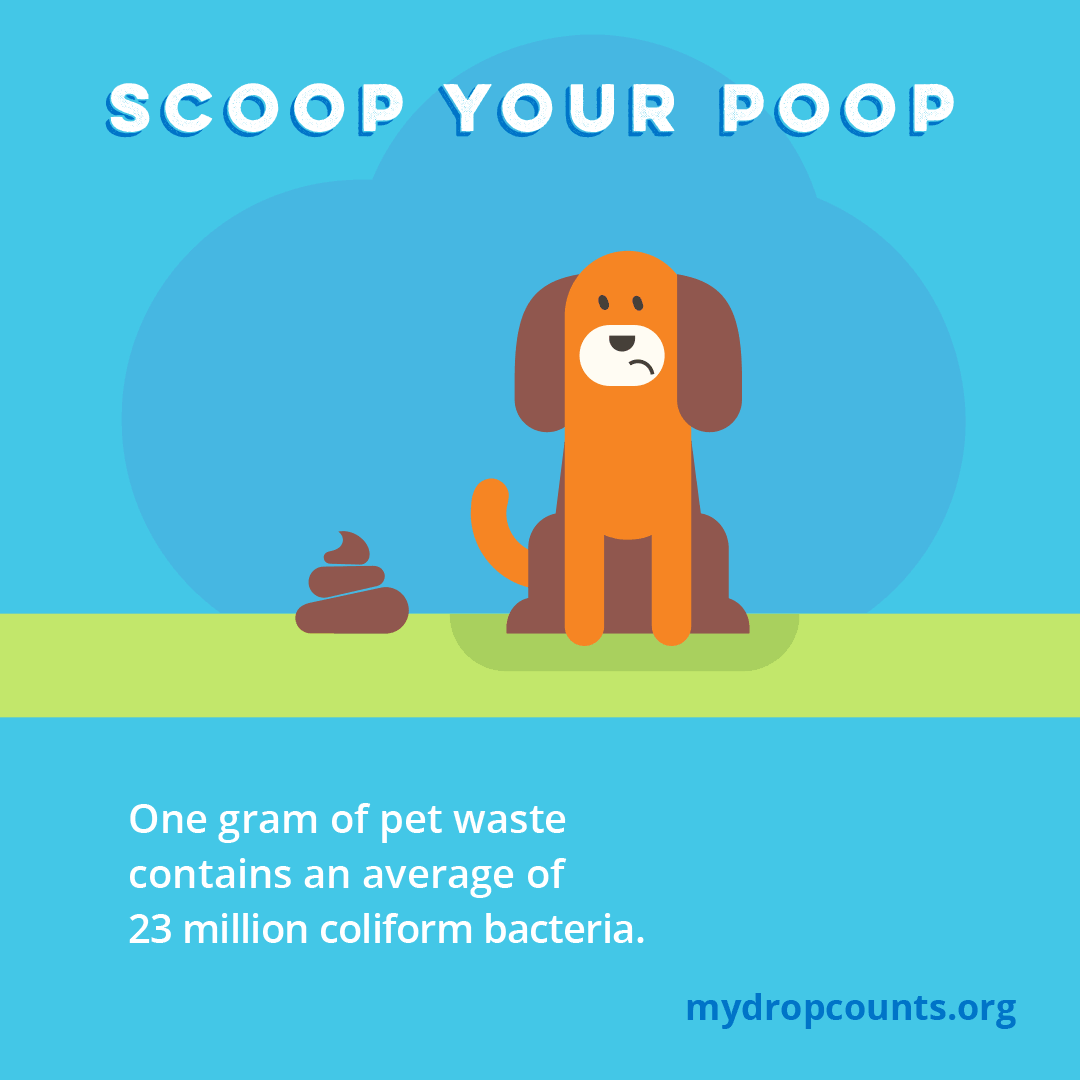
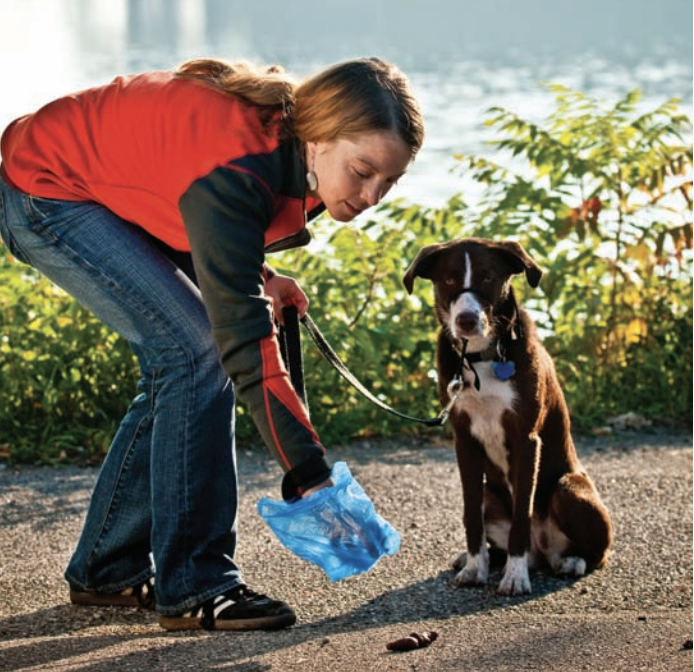
Pets are major sources of water contamination. When it rains, improperly disposed of dog feces may wash bacteria into storm sewers which usually drain into our lakes and streams. Picking up after your pet is part of being a good neighbor and responsible pet owner – and in most places, it’s the law.
Doing the right thing is easy. Scoop the poop, bag it, tie it closed, and toss it in the trash. This will prevent pollution and reduce strain on our water supply system. To learn more:
- Download Brochure
- Check out these videos from local students on the importance of proper disposal of pet waste.
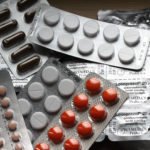
Properly Dispose of Medicine, Chemicals and Household Waste
- Household hazardous wastes: Household hazardous wastes like cleaning products and chemicals can affect your family and pets and can be toxic to fish and wildlife. If you have leftover hazardous household chemicals, recycle and dispose of products properly. Go to earth911.com to find local recycling center near you or contact your local government for information on proper disposal and collection events
- Unused medicine: Your best option is to take your unused medication to a local take-back program. There are many permanent drop off locations across Georgia. If you can’t get to a drop-off location, mix your medicine with an undesirable substance like kitty litter, used grease or coffee grounds. Then throw it in the trash. This will make it less appealing to pets and children and less recognizable for anyone that may intentionally go through your trash.
- Garbage dumping: Never dump trash or rubble by the side of the road or on unused property – it’s both illegal and can damage waterways and harm wildlife and people. If you see things like illegal dumping, spills and overflows, visibly contaminated streams, or connections or discharges into the streets or storm drains, report to local law enforcement and/or your local utility or watershed management office.
- Download Household Solutions for Preventing Water Pollution from Hazardous Wastes Brochure
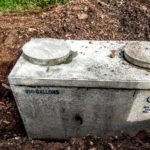
Maintain Your Septic Systems
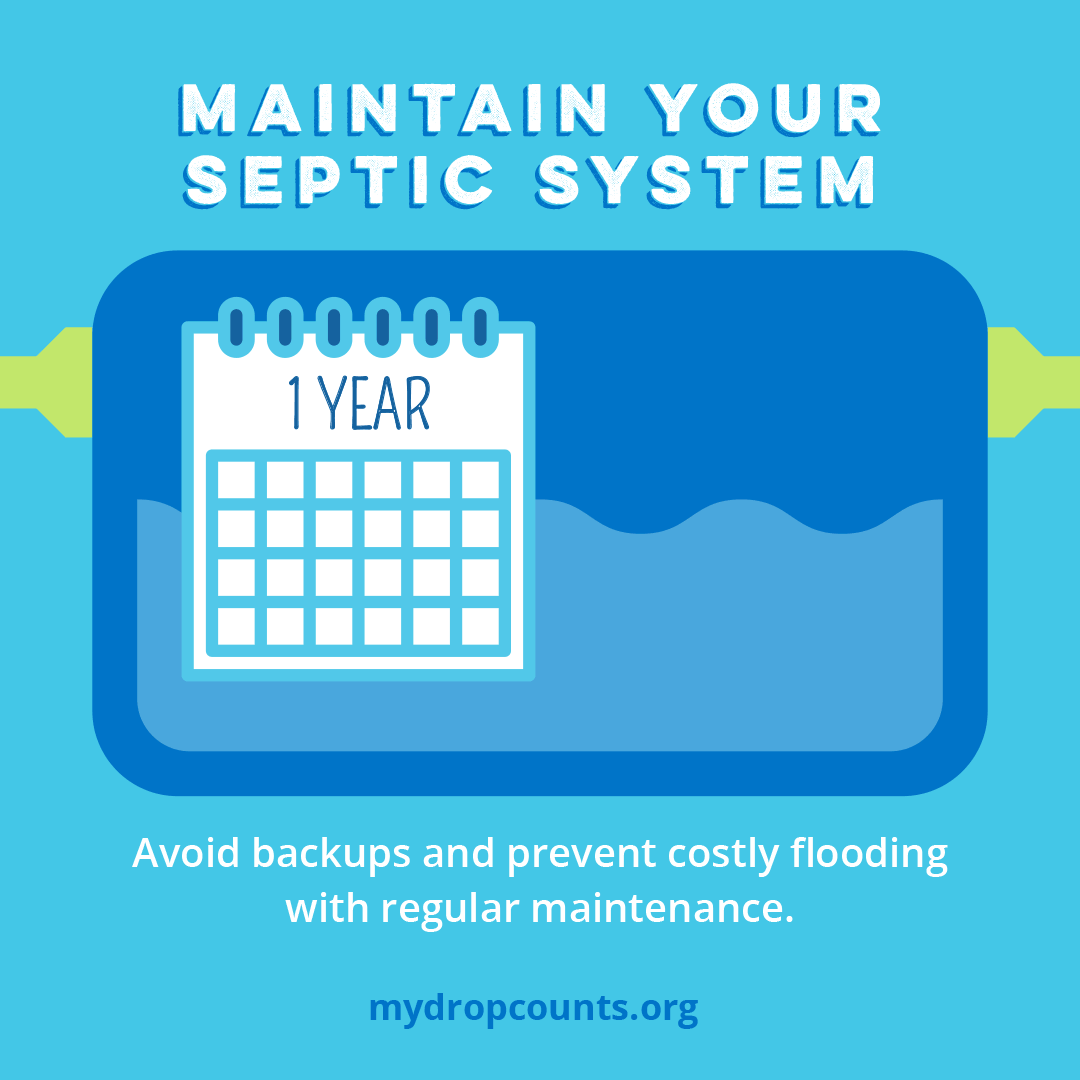
1 in 4 metro Atlanta homes is on a septic system. A failure of this system could be your worst experience of home ownership. Check your last service date and schedule an inspection to check for leaks and determine if it needs to be pumped. If you are not sure if you are on a septic system, call your local department of public health.
Additional resources:
- Homeowners Guide: Septic System Maintenance
- Brochure: Pollution Prevention Tips for Septic Systems
- Door hanger: Get Pumped on Septic!
- Brochure: “Do Your Part, Be Septic Smart”
- Realtor training: If your real estate school is interested in scheduling a Georgia Real Estate Commission-accredited training on septic system basics and proper maintenance, please contact us.
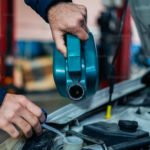
Maintain Your Vehicle and Properly Dispose of Used Oil
Oil, antifreeze and other fluids from your vehicle that end up on your driveway or street will eventually be carried by stormwater to the nearest river, lake or stream when it rains. Small oil leaks and other vehicle fluids can add up to a big problem for our waterways. In fact, a single quart of motor oil can contaminate up to 2 million gallons of drinking water. Follow these additional tips to reduce water pollution associated with vehicle maintenance:
- Never dispose of vehicle fluids into a storm drain or drainage ditch. Recycle oil and other fluids.
- Inspect and maintain your car regularly to prevent leaks of oil, coolant and other vehicle fluids.
- Never work on a vehicle in the street or near a stormwater drain or drainage ditch.
- Perform maintenance work on a flat concrete surface where spills can be easily cleaned up.
- Place a tarp, ground cloth, sheet of plywood, cardboard or newspaper under a vehicle to capture any leaks or spills.
- Always use a funnel when pouring liquids to avoid spills.
- Use a drip pan under a vehicle when changing fluids, unscrewing filters and removing other parts that might leak.
- Immediately clean up vehicle fluid spills with rags or other absorbent materials such as kitty litter, sawdust or oil absorbent.
- Recycle used tires and batteries.
- Go to www.earth911.com to find a local parts stores and service stations in your community that will recycle vehicle fluids, batteries, oil filters and parts.
Additional resources:

Use a Commercial Car Wash that Recycles Water
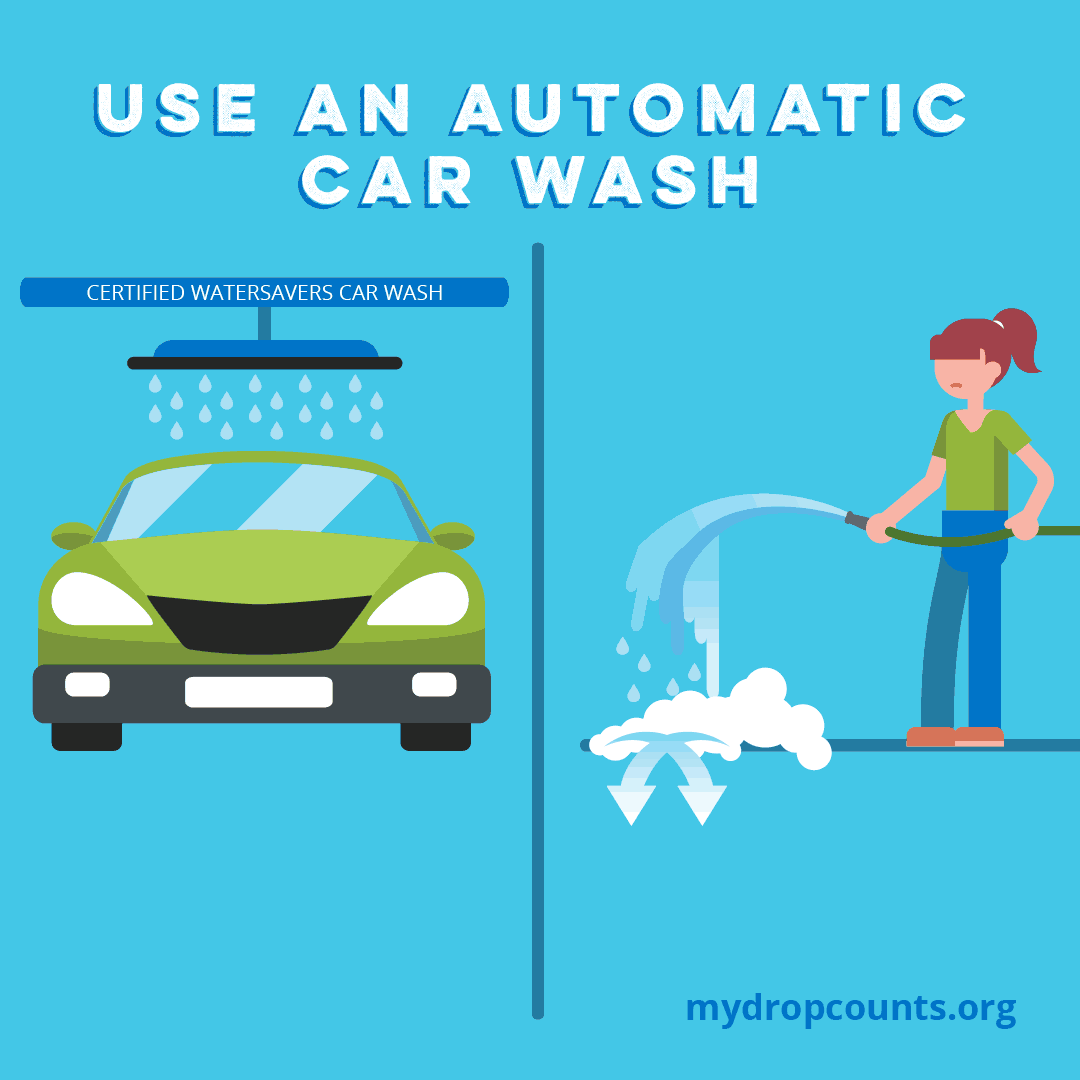
A 10-minute car wash using a standard garden hose can use 100 gallons of water and the used rinse water can contain oils and grease and other toxic substances that pollute the environment when it flows to storm drains and into the nearest creek or stream.
To save water and protect our waterways, take your car to a commercial car wash that recycles water. Commercial car washes are better than your driveway because their drains are connected to a sewer system and the wastewater will be sent to a treatment plant for cleaning. If you must wash your vehicle at home follow these tips:
- Wash on grass or soil (not concrete) which can naturally filter and absorb pollutants.
- Use products that will not harm the environment.
- Use an auto-shut off hose nozzle or low-volume or pressure device to reduce over spraying and wasting water.
- Wash your vehicle when needed rather than once a week.
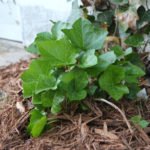
Practice Water-wise Landscaping & Irrigation
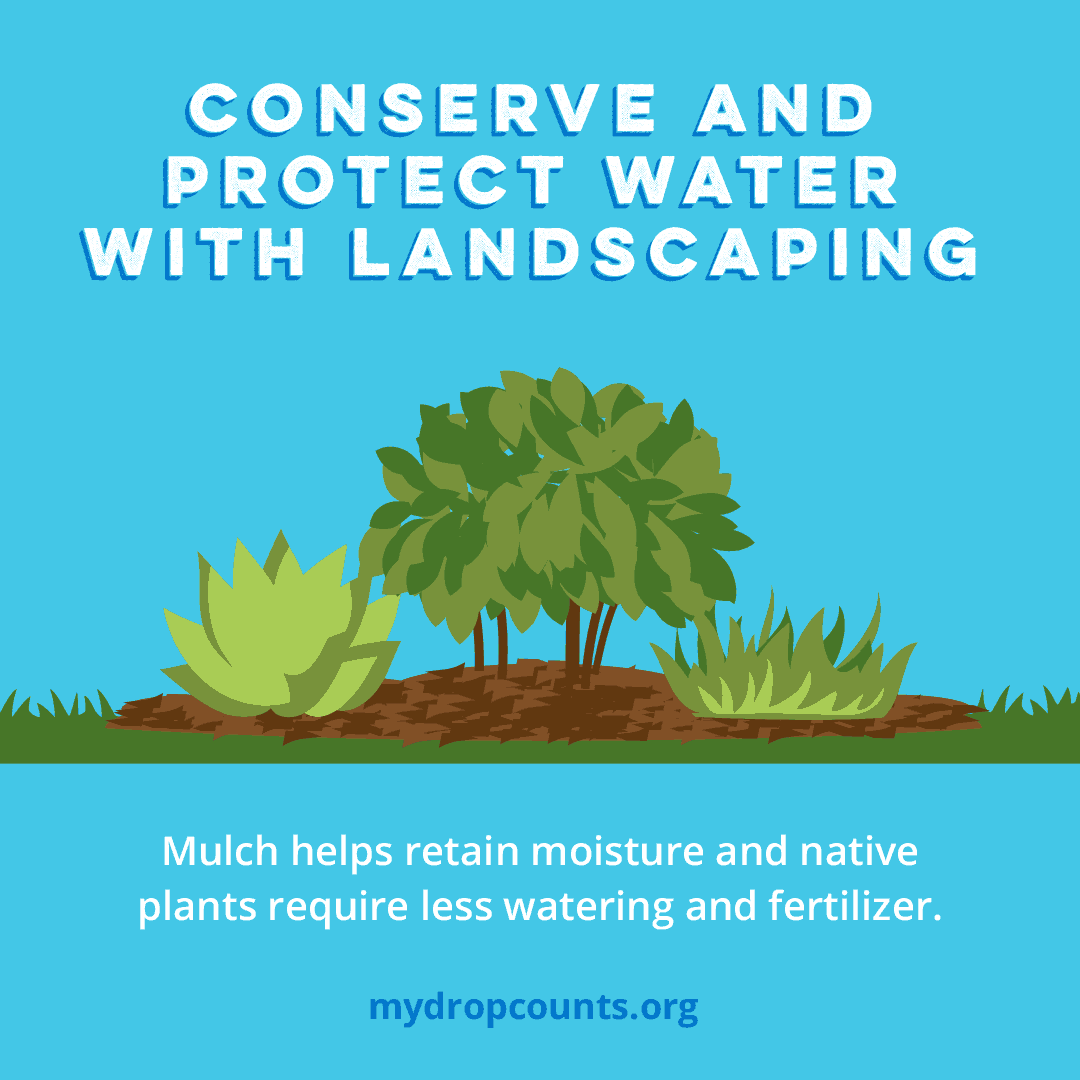
Water-wise landscaping can help conserve water and protect waterways from pollution.
- Use mulch and native plants that are adapted to local conditions requiring less water, fertilizer and pesticides.
- Set your sprinkler system to manual and only water before 10 a.m. or after 4 p.m.
- If you have an irrigation system, only use as needed and inspect for leaks and broken or clogged sprinkler heads.
- For additional guidance on how to maintain your irrigation systems and water efficiently, check out our irrigation system watering and maintenance guides.

Care for Your Pool and Spa
Pool & Spa Maintenance Tips
Proper pool maintenance is important to save water, energy and money, as well as to protect landscapes, waterways and sewer systems.
For Conserving Water
Pools provide a fun and relaxing way to keep cool. However, if not maintained with water efficiency in mind, your pool could be sending water and money down the drain. Pools can lose water through evaporation, pool cleaning, leaks, and splashing. The U.S. Environmental Protection Agency’s (EPA) WaterSense® program has developed a Pool Water Efficiency Guide to help residential pool owners and maintenance professionals understand and address these issues to save water. Did you know? Using a pool cover can prevent up to 95 percent of pool water evaporation!
Commercial pool owners can find additional information at www.epa.gov/watersense in the WaterSense at Work: Best Management Practices for Commercial and Institutional Facilities which includes Commercial Pool and Spa Equipment guidelines.
For Protecting Water
Pool and spa water often contains chlorine, bromine and other chemicals. While these chemicals keep water clean and clear, they can damage the environment if pools and spas are improperly maintained or drained. Follow our Pollution Prevention Tips for Pools and Spas to help protect our rivers, lakes and streams.
Tips for Businesses | See Tips for Residents
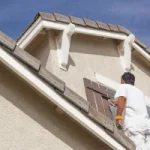
Construction & Remodeling
Construction activities—which include remodeling, repairs and demolition—can generate a wide variety of contaminants that can pollute stormwater, including sediment and suspended solids, solvents, paints, cleaners, adhesives, wood treatments, heavy metals, asphalt and concrete, as well as trash and debris.
By implementing the procedures below during all construction, remodeling, repair and demolition activities, your business and project site can be part of the solution to stormwater pollution.
- Keep the construction site clean and orderly. Sweep outdoor areas regularly, and put sweepings in the trash. Do not hose down debris into stormwater drains, drainage ditches or surface waters.
- Use stormwater drain covers, filter fabric, silt fences or secured liners to keep dust, sediment, other pollutants and wash water from entering the stormwater drainage system.
- Store all construction materials indoors, or under a secure waterproof tarp or cover, wherever possible.
- Do not dump any solid or liquid waste materials onto the ground or pavement, down a stormwater drain or into a drainage ditch or surface water.
- Contact utilities protection center(s) and coordinate with utility providers prior to digging. Look for manholes and clean-outs that may indicate the presence of sewer or septic systems.
- Follow the approved erosion and sedimentation (E&S) control plan and implement appropriate controls and best management practices.
- Follow established best practices and procedures for concrete and asphalt installation, landscaping and fueling activities.
- Heavy equipment, pumps and generators should be properly maintained, so they do not leak petroleum, hydraulic oil or other pollutants.
- Remove debris and trash in a timely fashion. Properly dispose of construction debris and waste materials, including sweepings, sediment and wash water. Recycle residual building materials and supplies as much as possible.
- For demolition activities, use water spray or approved dust suppressants to help control dust and particulates. The amount of water should be actively controlled and monitored to eliminate contaminated runoff from leaving the site.
- Avoid excessive and repeated applications of dust suppressant chemicals.
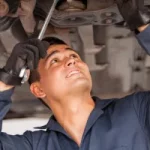
Vehicle Service & Maintenance
Maintenance of cars and trucks can be a significant source of stormwater pollution due to the use of harmful materials and wastes involved. Engine repair and service, brake and transmission work, parts cleaning, replacement of vehicle fluids and outdoor vehicle and equipment storage can all contribute a number of contaminants to stormwater runoff, such as hydrocarbons (motor oil, gasoline, diesel fuel and greases), heavy metals (lead, copper and zinc), antifreeze, solvents and other toxic chemicals.
By employing proper procedures during repair and maintenance, vehicle storage, waste handling and cleaning, your business or facility can help to prevent these harmful contaminants from polluting our waters.
What can YOU do?
Repair and Maintenance Activities
- Perform all repairs and maintenance in an indoor garage or vehicle maintenance area whenever possible.
- If it is necessary to work outdoors, always use tarps and drip pans beneath the vehicle to catch spills and drips.
- Always use a funnel when pouring liquids, and use a drip pan under a vehicle when unclipping hoses, unscrewing filters and removing other parts that might leak. This keeps splatters and drips off the shop floor.
- Clean up vehicle fluids with rags or other absorbent materials immediately.
Vehicle and Equipment Storage
- Store idle equipment under cover.
- Inspect vehicles and heavy equipment for leaks on a regular basis, particularly those parked or stored long-term. Use a drip pan underneath leaking vehicles and heavy equipment.
- Drain all fluids, including unused gasoline, engine oil, transmission and hydraulic oil, brake and radiator fluid and air conditioning coolant, from wrecked vehicles and “part cars.”
Material and Waste Handling
- Do not pour liquid waste into floor drains, sinks or into any sanitary sewer connection, and do not dispose of liquid waste to a stormwater drain, drainage ditch or surface water.
- Recycle grease, used oil and oil filters, antifreeze, cleaning solutions, automotive batteries, hydraulic fluids and transmission fluids. Collect and store these recyclable materials separately and contract with a recycling service for pickup.
- Place oil filters in a funnel over a waste oil recycling drum and allow to drain for at least 24 hours before recycling or disposing.
- Store batteries upright in a contained and covered place indoors. Place cracked or leaking batteries in a non-leaking secondary container and dispose of properly at recycling or household hazardous waste facilities.
Cleaning and Good Housekeeping Practices
- Keep work areas, tools and equipment clean and orderly. Ensure that oil and grease do not accumulate.
- Use cloth rags to clean up small drips and spills. A permitted laundry can wash reusable cloth rags.
- For larger spills, apply absorbent materials, such as absorbent granules, socks and pads. Absorbents should be cleaned up promptly, bagged and placed in the trash.
- Switch to the use of non-toxic or less toxic chemicals for maintenance and cleaning whenever possible.
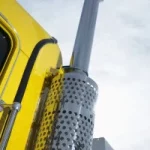
Fueling Operations
Gas stations and other fueling operations, including truck stops, terminals, fleet yards, airports and construction sites, serve to refuel motor vehicles, equipment or small containers with petroleum products. Spills and leaks can occur during fueling and contaminate stormwater runoff, surface water and groundwater with toxic hydrocarbons, oil and grease, heavy metals and other chemicals used as fuel additives.
What can YOU do?
- Never leave vehicles unattended during refueling.
- Post signs at the fuel dispenser or fuel island reminding users not to top off fuel tanks, which can increase the risk of a spill.
- Ensure the following safeguards are in place:
- Fuel dispensing equipment and pumps that are equipped with automatic shutoffs and overflow protection to prevent spills and leaks.
- Protective guards around pumps, tanks and piping to prevent damage from vehicles.
- Clear tagging or labeling of all equipment, pumps and valves.
- Install vapor recovery nozzles and systems to help control drips and protect air quality.
- Maintain clean fuel dispensing areas by sweeping litter and debris and using rags and absorbents for leaks and spills.
- Absorbents should be removed promptly and disposed as hazardous waste.
- Cover the fueling area with an overhanging roof structure or canopy so that rain cannot come in contact with the fueling area.
- Label drains within the facility by paint, stencil, sign or marker to indicate whether they flow to an oil/water separator, sanitary sewer or stormwater drain.
- Use secondary containment when transferring fuel from a tanker truck to onsite fuel tanks. Cover storm drains in the vicinity during fuel transfer.
- On construction sites, all fueling operations should be located to ensure that spills or leaks will not discharge, flow or be washed to the stormwater drainage system, surface waters or groundwater. Place temporary caps over nearby catch basins and manhole covers so that spills cannot enter the stormwater drainage system if they occur.
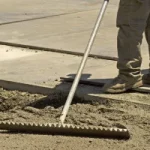
Concrete & Asphalt
Without proper precautions, concrete and asphalt production and installation can contaminate stormwater and downstream rivers, lakes and streams with high concentrations of suspended solids, toxic hydrocarbons and other chemicals, oils and greases, and heavy metals. In addition, hardened asphalt and concrete can clog and damage stormwater drains and pipes, which can result in localized flooding. By implementing the practices below during concrete and asphalt production, installation and cleanup, your operation or construction site can help be the solution to stormwater pollution.
What can YOU do?
- Use stormwater drain covers, filter fabric, silt fences or secured liners to keep concrete dust, slurry, aggregate and wash water from entering the stormwater drainage system.
- Concrete and asphalt materials should be kept under cover in a building or silo, vehicle, or in a covered storage pile with secured waterproof cover or awning.
- Place drop cloths or tarps under all concrete and asphalt trucks and equipment when not in use. Use drip pans, drop cloths, or tarps wherever concrete, asphalt and asphalt emulsion chunks and drips are likely, such as beneath extraction points from mixing equipment.
- Place hay bales or other erosion controls downslope of installation areas to capture stormwater runoff containing mortar, cement or asphalt.
- Prevent cement dust from settling onto surfaces where it will contaminate stormwater runoff. Sweep up any settled dust—never hose it down.
- Contain and collect the slurry from exposed aggregate washing, where the top layer of unhardened concrete is hosed or scraped off to leave an exposed aggregate or rough finish. Do not wash or allow discharge of concrete slurry or asphalt to a stormwater drain, drainage ditch, or surface water.
- Shovel or vacuum saw-cut slurry. Do not allow slurry to flow across pavement and do not leave on the surface of the payment.
- Protect newly poured and paved areas from rainfall and stormwater runoff until hardened or cured.
- Avoid overspray of curing compounds. Minimize the drift of chemicals as much as possible by applying the curing compound close to the concrete surface.
- Sealing operations should not be undertaken if rainfall is predicted during the application or curing period.
- Designate a washout area facility for truck and equipment cleaning a minimum of 50 feet away from a stormwater drain, drainage ditch or surface water that has sufficient volume to completely contain all liquid and waste materials generated during cleaning.
- Discharge all process water from production, pouring and equipment cleaning activities to a sump, water treatment process, recycling system or sanitary sewer system. Never discharge or dump raw, excess or waste materials, slurry, or rinse water to a stormwater drain, drainage ditch or surface water.
- Appropriately dispose of any solid concrete or asphalt waste. Return leftover materials to the base stockpile or mixer.
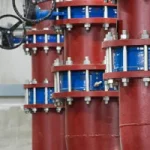
General Industrial
By implementing the proper practices and procedures below for your operations and during your landscaping and vegetation management work, your business and project site can help to prevent stormwater pollution and keep our waters healthy for everyone.
What can YOU do?
Loading & Unloading Areas
- Loading/unloading areas should be covered to reduce exposure of materials to rain.
- Use overhangs or door skirts between trailers and buildings.
- Load and unload only at designated loading areas to limit the areas where spills and leaks can occur.
Outdoor Work Activities
- Cover any outdoor production, assembly or work areas with a permanent roof if possible. Use berms or curbs to prevent stormwater runoff from adjacent areas from flowing onto the work areas.
- Place drip pans or absorbent materials beneath any process or activity with a potential to leak or spill contaminants.
- All equipment should be regularly inspected and properly maintained such that they do not leak or discharge petroleum, hydraulic oil, or other pollutants.
Outdoor Storage Areas
- Outdoor storage areas should be covered with a roof, and bermed or enclosed to prevent contact with rain and stormwater runoff. This is particularly important for water-soluble materials and those that can leach pollutants into stormwater or groundwater.
- Areas used to store liquid containers should also have a secondary containment system to prevent contact with rain and stormwater runoff.
- Protect all temporary stockpiles from contact with stormwater runoff from surrounding areas using sediment barriers such as berms, dikes, fiber rolls, silts, fences, or sandbags.
- Store small amounts of bulk materials and any bagged materials on pallets to avoid contact with stormwater runoff.
Waste Management
- Use covered dumpsters and solid waste containers with leak-proof lids and covers. Dumpsters and waste containers should be located on paved areas or concrete pads, and covered by an overhanging roof structure or canopy when possible. Ensure that dumpster lids and container covers are always closed when not in use.
- Only appropriate solid wastes should be placed in dumpsters and solid waste containers. Certain wastes (such as hazardous wastes, appliances, fluorescent lamps, pesticides, etc.) may not be disposed of in solid waste containers.
- Do not dump liquids in dumpsters. Fats, oils and grease should be collected separately and not disposed into solid waste containers.
- Cover temporary waste piles with a waterproof cover that is adequately secured.
Parking Areas
- Post “no littering” signs in parking areas and provide an adequate number of covered trash receptacles to discourage littering.
- Clean out receptacles frequently to prevent spillage.
- Clean parking areas using a mechanical or vacuum sweeper on a regular basis as needed. Establish the frequency of parking area cleaning based on usage and litter patterns.
Spills and Leaks
- Immediately contain and clean up any leaks or spills. Use dry absorbents, such as absorbent granules, socks and pads to clean up spills or leaking fluids. Absorbents should be cleaned up properly, bagged and disposed of properly.
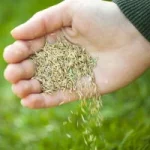
Landscaping
Landscaping and vegetation management include a wide variety of activities, including vegetation installation and removal, lawn mowing, fertilizer and pesticide application, watering and other landscaping practices. Many of these activities can result in the contamination of stormwater runoff with sediment, nutrients, organic materials, toxic chemicals, heavy metals, oils and trash.
By implementing the proper practices and procedures below during your landscaping and vegetation management work, your business and project site can help to prevent stormwater pollution and keep our waters healthy for everyone.
What can YOU do?
Landscaping and Planting Activities
- Schedule any soil disturbance activities such as grading and excavation projects during dry weather.
- Use mulch or other appropriate erosion control measures when soils are exposed.
- Place landscaping materials, including soil and mulch, away from stormwater drains, drainage ditches and surface waters.
- Berm and cover stockpiles with secured waterproof tarps or plastic sheeting to prevent exposure to rainfall and stormwater.
- Cover all stormwater drains before hydro-seeding. Avoid seeding lawns on steep slopes or areas that do not drain well.
- Sod these areas to protect from erosion.
- Do not refuel or clean lawn mowers and other landscaping equipment near a stormwater drain, drainage ditch or surface water. Inspect all landscaping equipment for leaks on a daily basis and repair as needed.
Fertilizer Application
- Always follow the manufacturers’ recommendations and directions for the proper amounts of fertilizer and application instructions. Make sure to calibrate granular spreaders and liquid applicators to avoid excessive application.
- Avoid applying fertilizers when it is raining or when heavy rain is forecast.
- Fertilizers should be worked into the soil rather that broadcast and left on the surface.
- Close fertilizer spreaders when going over pavement, bare soil and other non-vegetated surfaces. Sweep up dry fertilizer granules that fall on pavement or other hard surfaces. Do not hose or blow off.
Weed / Pest Management
- Properly identify weeds, diseases and insects before applying a pesticide.
- Use non-toxic and more environmentally friendly pest control methods, whenever possible.
- Read and follow the label directions and apply all pesticides as directed. Follow all federal, state, and local laws and regulations governing the use, storage, and disposal of fertilizers and pesticides and training of applicators and pest control advisors.
- Do not apply pesticides when it is raining or when rain is forecast. Check the irrigation schedule to ensure that pesticides applied will not be applied prior to watering. Apply pesticides only when wind speeds are low.
- Do not mix, prepare or apply pesticides near a stormwater drain, drainage ditch or surface water.
- Spot treat only affected areas instead of using widespread pesticide application.
- Sweep up any dry pesticide that falls onto pavement or other impervious surfaces. Do not hose or blow off. Follow manufacturers’ instructions for any spills and leaks.
Waste Management
- Sweep and bag waste materials rather than blowing or washing off paved surfaces.
- Never blow or dump grass clippings, leaves and other waste into the street, stormwater drain, drainage ditch or surface water.
- If disposing of yard waste off-site, bag as solid waste for pickup or delivery to a composting facility or permitted landfill.
Always cover waste materials when hauling off-site.
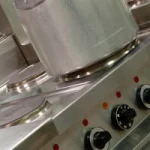
Restaurants
Contaminants from restaurants and other food service facilities, operations and activities have the potential to pollute rivers, lakes and streams with food waste, oil and greases, detergents and litter.
By following proper procedures during the handling of solid and food wastes, cleaning activities and fats, oils and grease management, your business or facility can help to prevent these harmful contaminants from polluting our waters.
What can YOU do?
Food Service Cleaning
- Clean items such as floor mats, vent filters, garbage cans and cooking equipment either:
- In an indoor mop sink (never in a food preparation sink) or dedicated indoor cleaning area with an internal floor drain connected to a sanitary sewer.
- Using a covered outdoor wash area connected to a sanitary sewer.
- Never pour wash water onto a parking lot, alley or sidewalk or into a stormwater drain or drainage ditch.
- Regularly clean up food refuse and other trash and debris from parking lots and outside areas surrounding the restaurant or food service facility, particularly drive-thru and outdoor eating areas, using dry cleaning methods such as sweeping.
- When pressure washing outdoor areas (including parking lots and dumpster storage areas):
- Cover all nearby stormwater drains with impervious barriers such as berms, plugs, rubber mats or screens.
- Collect and pump wash water to the sanitary sewer, filter the runoff and properly dispose of filtered solids or discharge to a landscaped area.
- Never hose down litter, food wastes or spills to a stormwater drain or drainage ditch.
Solid Waste Management
- Solid and food wastes must be sealed or contained in some manner to ensure they do not leak from dumpsters or other waste containers. Never place liquid wastes or leaky garbage bags into a dumpster.
- Never dump any food products or wastes into a stormwater drain or drainage ditch.
Fats, Oils and Grease Management
- Never pour fats, oils or grease into a sink or floor drain or onto the ground or into a storm drain or drainage ditch.
- Never pour fats, oils or grease into a garbage can or dumpster.
- Dispose of all wastewater containing fats, oils and grease using a grease trap or interceptor.
- Properly store or recycle fats, oils and grease using approved collection containers. Ensure that collection containers are covered or sealed before transporting from the kitchen.
- Collect and dispose of concentrated waste fats, oils and grease using a permitted waste grease hauler.
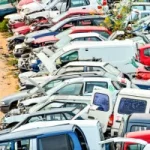
Salvage Facilities
Salvage and recycling facilities often store scrap items and materials outdoors on a temporary or permanent basis. This can include vehicles, equipment, appliances, electronics, scrap metal, and recyclables such as cans, bottles, glass, plastic, cardboard and paper. Stormwater runoff from these sites can contain oil and gasoline, heavy metals, suspended solids, and other toxic chemicals. Unsecured scrap and recyclable materials can also be carried away by stormwater runoff, creating the potential for blockage in stormwater drainage systems and trash in downstream waterways. By implementing the following practices and procedures at your salvage or recycling facility, you can help be part of the solution to stormwater pollution.
What can YOU do?
- Remove all fluids from incoming vehicles, equipment, appliances, and other salvage items. This includes:
- Gasoline
- Motor Oil and Lubricants
- Antifreeze, Coolants and Refrigerants
- Brake and Transmission Fluids
- Solvents
- Other Liquid Chemicals and Wastes
- Segregate all waste fluids, and store and dispose–or recycle–these fluids properly.
- Fluid removal should be done in a designated area that has a hard impervious surface that is covered by a roof or tarp.
- Drip pans should be used during fluid removal operations and placed under potential leaks. Use dry absorbents, such as absorbent granules, socks and pads to clean up spills or leaking fluids.
- Remove batteries from vehicles, equipment and electronics, and store using an enclosed container. Properly recycle or dispose of the batteries. Use neutralizing agents such as baking soda for lead-acid batteries in case of battery breaks or leaks.
- Remove any other contaminated or hazardous items or materials from vehicles, equipment, appliances and other salvage items. Store and dispose, or recycle, these items properly. These items and materials can include:
- Airbag Cartridges
- Oil Filters
- Brake Pads and Shoes
- Fluorescent Bulbs
- Mercury Switches
- Other Contaminated or Hazardous Items and Materials
- All scrap metal, vehicles, appliances, equipment and materials that may contaminate stormwater runoff should be covered with permanent or semi-permanent covers to prevent contact with rain.
- Dikes, berms, containment trenches, culverts, and surface grading should be used to divert runoff from storage areas.
- Cover or enclose stockpiles or bins of paper, cardboard, glass, plastic and any other material that has the potential to contaminate stormwater runoff.
- Conduct all vehicle and equipment crushing operations in a bermed, impervious area.
- If transporting salvage, scrap or recyclable items, an impermeable liner should be placed in the vehicle, as well as spill cleanup materials, to capture and clean up any spilled or leached fluids or contaminants.
